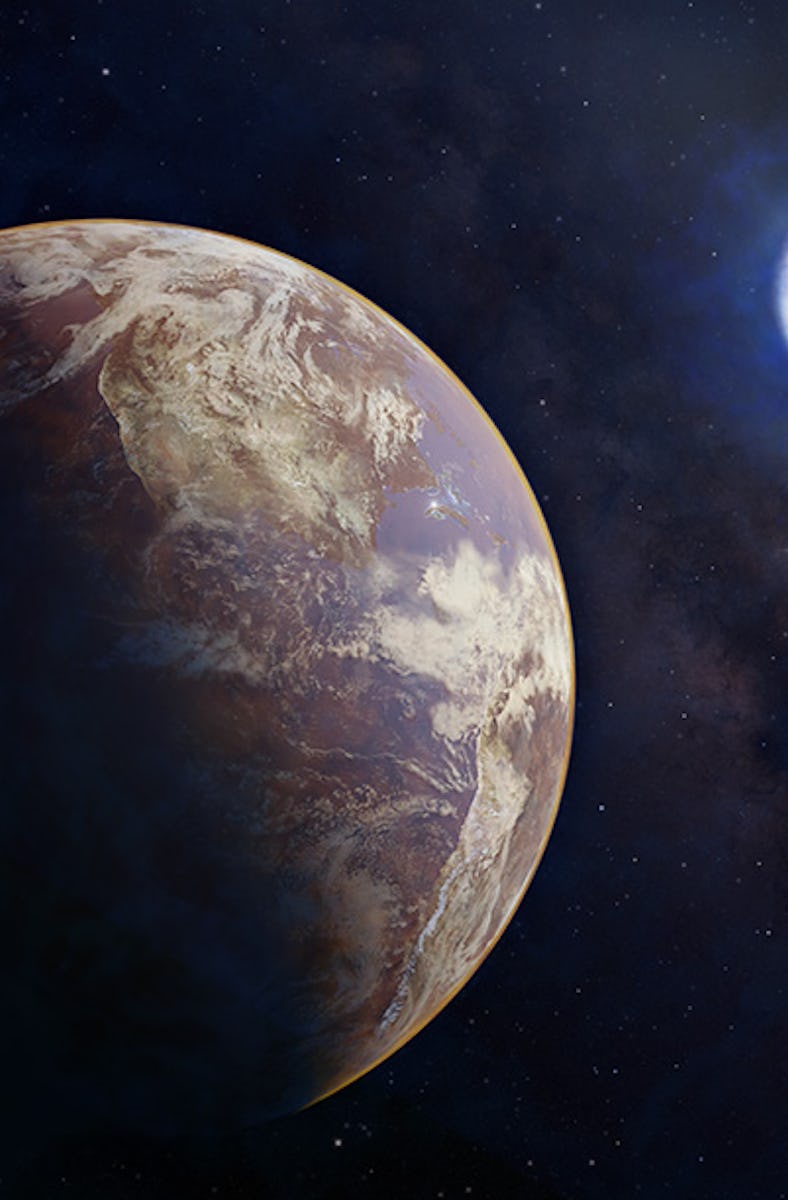Supernovae Could Be Deadly at Greater Distances Than We Thought
Earth is safe, but other habitable worlds are in the danger zone.

A recent study of supernovae reveals yet another way the death of a star could spell doom for planets orbiting nearby stars.
When the blast wave from a supernova plows into dense clouds of gas, the tremendous force of the impact churns out X-rays that blast into space and could spell doom for planets up to 160 light years away. University of Illinois at Urbana-Champaign astronomer Ian Brunton and his colleagues recently discovered this phenomenon by observing the aftermath of 31 supernovae with humanity’s small fleet of X-ray space telescopes. They published their results last week in The Astrophysical Journal.
In the Shadow of a Ticking Time Bomb
All stars above a certain mass eventually collapse under their own gargantuan weight and explode outward in a fiery cosmic blast called a supernova. If you live on a planet within 160 light-years or so of one of these stars, you’re living in the shadow of a ticking time bomb. Thankfully, our cozy little Solar system is far away from any massive stars that might go supernova. The nearest likely supernova victim is red giant Betelgeuse, a safe-but-exciting 650 light years away.
But for fun, imagine you’re an alien on a hypothetical exoplanet, exactly 120 light-years or so away from an enormous red giant star like Betelgeuse. From the time when the supernova first flares, you probably have just days before the first wave of deadly radiation — made up mostly of high-energy gamma rays — hits your planet.
That initial burst, if the supernova was big and powerful enough, could strip ozone from the atmosphere, leaving the surface unprotected from merciless ultraviolet radiation from your own once-benevolent star. Ultraviolet and gamma radiation would join forces to cause DNA mutations; cancer rates would go up, and viable births in nearly every species on the planet would go down. At the same time, the gamma rays could trigger chemical reactions in the atmosphere that form clouds of nitrogen dioxide: a smoggy chemical that would make the world a colder, dimmer place. Life is now difficult and precarious if it lasts at all.
Now imagine that you’re an alien on a different hypothetical exoplanet; no astronomer on your world has seen a supernova – or maybe you call them something equivalent to “guest stars” – for thousands of years. You have no reason to suspect disaster is about to strike, but suddenly crops start to fail, people and animals start to get sick, and food webs begin to collapse. This is happening because, centuries or millennia after a supernova, energetic, charged particles called cosmic rays bombard nearby planetary systems. Cosmic rays move fast, but they’re still made of matter and therefore move slower than radiation. But like gamma rays, the cosmic rays would further deplete the ozone layer and wreak havoc on life.
Those are the dangers we already knew about. But Brunton and his colleagues recently discovered a deadly new stage of a supernova’s aftermath, which strikes a few months or years after the supernova: around the time the visible light from the dead star’s fireball is beginning to fade from a nearby planet’s sky.
This before and after illustration shows how a supernova’s deadly waves of radiation and charged particles can wipe a planet’s surface bare of life.
A New Hazard to Alien Life
Every supernova shoots out gamma rays and X-rays. But it turns out that if the blast wave runs into dense gas in interstellar space, the violent collision between a powerful cosmic force and an enormous cosmic object can ramp up the amount of X-ray radiation, and enable it to fling it even farther into space. That’s what Brunton and his colleagues call “lethal consequences from supernovae interacting with their surroundings.”
Brunton and his colleagues used NASA’s Chandra, Swift, and NuSTAR space telescopes, as well as the European Space Agency’s XMM-Newton space telescope, to watch the afterglow of 31 distant supernovae. The astronomers noticed that where blast waves collided with gas clouds, the area tended to glow brilliantly in the X-ray wavelengths. They calculated that for the most powerful supernovae, those amped-up X-rays could have lethal consequences for planets within about 160 light years.
“If a torrent of X-rays sweeps over a nearby planet, the radiation would severely alter the planet’s atmospheric chemistry,” says Brunton in a statement. “For an Earth-like planet, this process could wipe out a significant portion of ozone, which ultimately protects life from the dangerous ultraviolet radiation of its host star.”
If it comes on the heels of the initial blast of gamma rays from the supernova, the secondary wave of X-rays could be the equivalent of kicking a planet while it’s down, wreaking even more havoc on climate and life. But because the X-rays get a boost from the blast wave/gas cloud collision, they can reach even further than the first wave of radiation, clawing at planets that scientists previously thought would be safe from the supernova’s deadly effects.
When astrobiologists look for life on other words, among the most important things they have to consider is location, location, location. Life is only likely to evolve if its home star system is in one of the patches of galactic real estate where planets are safe from gamma-ray bursts, supernovae, and other astronomical hazards long enough to sustain life. And according to Brunton and his colleagues, those patches just got a bit smaller.
As for our own homeworld: “The Earth is not in any danger from an event like this now because there are no potential supernovae within the X-ray danger zone,” says Connor O’Mahoney, also of the University of Illinois, a co-author of the study, in a statement. “However, it may be the case that such events played a role in Earth's past.”
This article was originally published on